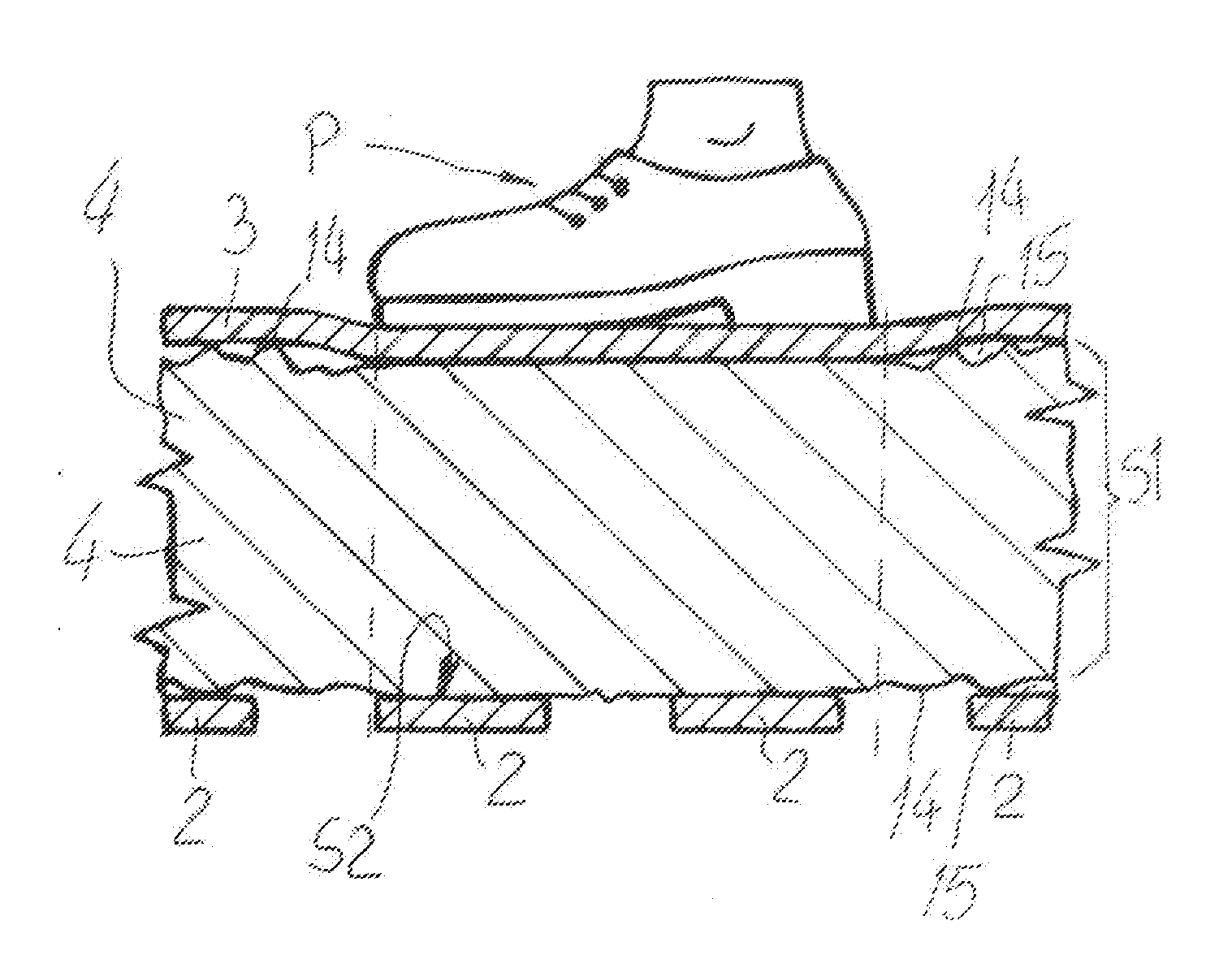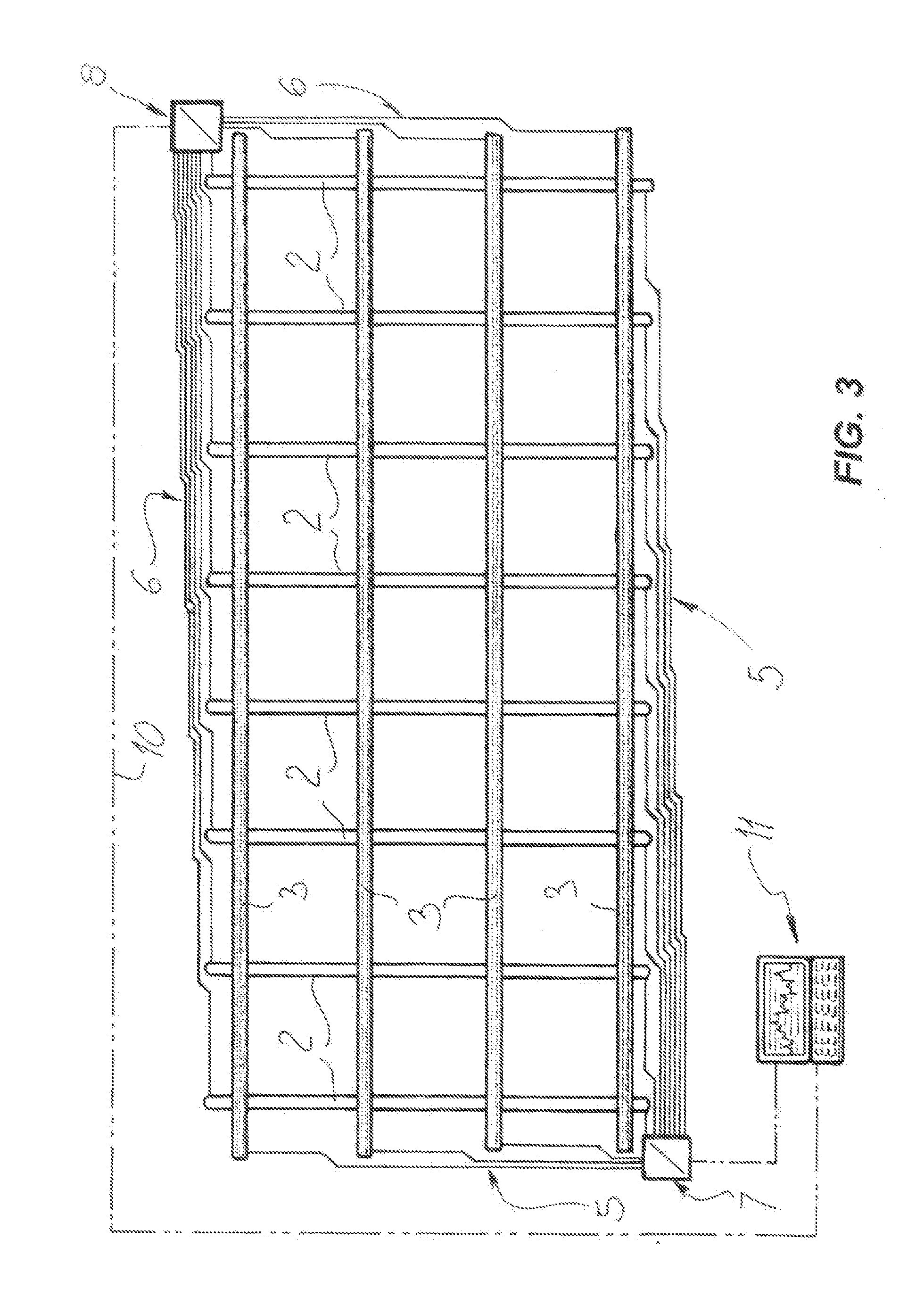Substrate for a sensitive floor and method for displaying loads on one substrate
a technology of substrates and substrates, applied in the direction of instruments, building components, electric digital data processing, etc., can solve the problems of affecting the general cost of making a sensitive floor, particular structural arrangements are required, and the above described prior art suffers from certain drawbacks. , to achieve the effect of reducing the overall thickness of the sensitive floor
- Summary
- Abstract
- Description
- Claims
- Application Information
AI Technical Summary
Benefits of technology
Problems solved by technology
Method used
Image
Examples
first embodiment
[0050]Referring now to FIGS. 1-3, numeral 1 designates a substrate, or a module to make a larger substrate, for making a sensitive floor, i.e. a floor that can continuously sense the stresses acting thereupon, and send the signals generated by these stresses to a computer 11 that has a program for promptly and continuously displaying the changes of these stresses on a monitor, in graphics forms.
[0051]The substrate 1 is preferably provided in the form of a flexible sheath, and may have a custom perimeter, or be divided into two or more modular elements that can be joined together side-by-side to form a large complete substrate.
[0052]The substrate 1 comprises a first frame of sensing means, which are preferably but without limitation made of parallel thin strips of a high-conductivity material, such as aluminum, having a first common orientation and referenced 2a-2d, whose number may change as needed.
[0053]The substrate 1 also comprises a second frame of sensing means, which is also p...
second embodiment
[0068]FIGS. 4, 7 and 8 show a substrate, referenced 50, for making a sensitive floor according to the invention.
[0069]Like in the above described embodiment, the substrate 50 comprises a first frame of strips, generally referenced 2, and a second frame of strips, generally referenced 3, both made of aluminum, and hence having a high conductivity, which are arranged in perpendicular relationship.
[0070]Nevertheless, unlike the previous embodiment, both frames of strips 2 and 3 lie on a common face 54 of the sheet 4, typically the face designed to face upwards when the substrate 50 has been laid.
[0071]In this case, in order to prevent contact interferences between the strips 2 and 3 at their intersection points, their upward surfaces are both coated with a sheet of insulating material, typically paper or plastic, referenced 55, as best schematically shown in FIGS. 7 and 8.
[0072]Conversely, the opposite surfaces of the strips 2 and 3, i.e. those facing the face 54, have no protection, l...
PUM
 Login to View More
Login to View More Abstract
Description
Claims
Application Information
 Login to View More
Login to View More - R&D
- Intellectual Property
- Life Sciences
- Materials
- Tech Scout
- Unparalleled Data Quality
- Higher Quality Content
- 60% Fewer Hallucinations
Browse by: Latest US Patents, China's latest patents, Technical Efficacy Thesaurus, Application Domain, Technology Topic, Popular Technical Reports.
© 2025 PatSnap. All rights reserved.Legal|Privacy policy|Modern Slavery Act Transparency Statement|Sitemap|About US| Contact US: help@patsnap.com



